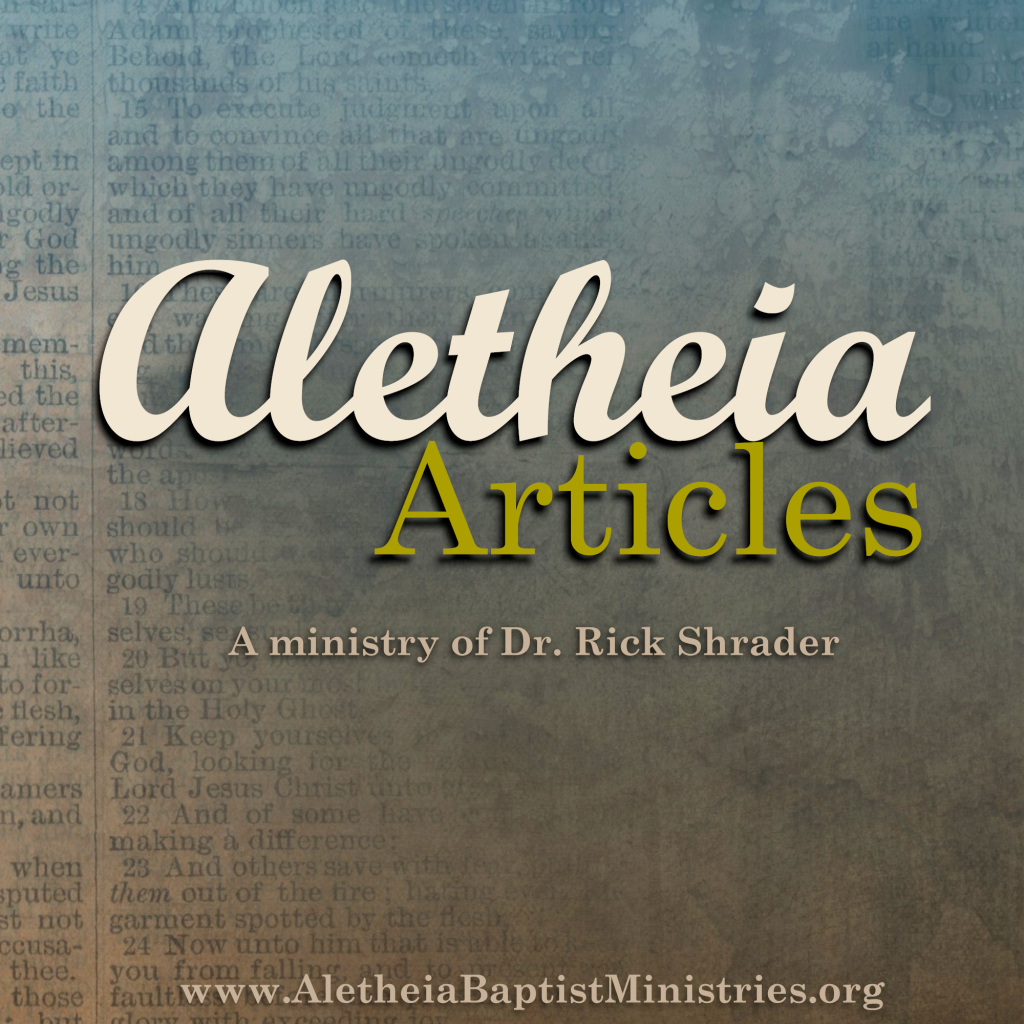
GPS – The Structure of Headship
by Rick Shrader

The subject of headship in the marriage and family immediately raises questions about equality, subordination, leadership, and love. The Bible says plainly that headship involves the Godhead, marriage (1 Cor. 11:3) and also the church (Eph. 5:23). These three spheres of headship teach us important things that relate to husbands and wives.
God is the head of Christ (1 Cor. 11:3). God has eternally existed as Father, Son, and Holy Spirit, one divine essence but in three equal persons. Though we speak of an eternal trinity, God is a tri-unity, not a tri-theism. He has always had one will and one essence. In the incarnation however, God the Son also took upon Himself a human nature with a human will. In the kenosis (or economic trinity) then, God the Father directs and commands the Son and in that sense is the head of “Christ” the incarnate One. The Son always obeys. Though the Father loves the Son, the role of authority flows only from Father to Son and not the other way. This arrangement, of authority and submission, accomplished salvation for mankind.
Christ is the head of the church (1 Cor. 11:3). This is stated specifically in Eph. 1:22; 5:23 and Col. 1:18, but it is implied in 1 Cor. 11:3 in that He is “the head of every man.” The flow of authority among Christ and the church also flows one way. Though Christ “loved the church and gave Himself for it” (Eph. 5:25), Christ does not submit to the church but the church to Christ. And still, as the Father eternally loves the Son in that divine headship (John 17:24-25), Christ loves His bride the church and gave Himself for her. We see in these arrangements both headship and submission as well as love with sacrifice.
The husband is the head of the wife (1 Cor. 11:3). Paul’s subject in 1 Corinthians 11:1-16 is the relationship between husband and wife. The reason for mentioning Christ being subject to God, and every man being subject to Christ, is to illustrate headship and submission for the man and the woman. This and other passages suggest proper headship.
The husband is the head by appearance (1 Cor. 11:1-16). Head covering was a cultural way of showing the difference in gender and headship. A woman’s appearance ought to show her submission and the man’s appearance his leadership. A man ought to be recognized as a man and a woman as a woman in all the ways their culture shows it.
The husband is head by sacrifice (Eph. 5:22-33). The husband is to love his wife as Christ loved the church and gave Himself for it. His headship over his wife is sacrificial as was Christ’s. The love of one’s wife exceeds the love of one’s self; it washes every spot and wrinkle; it leaves one home to create another.
The husband is head by creation (1 Tim. 2:9-15). Adam was formed first but Eve was deceived first (vss. 13-14). For this cause men are the teachers and preachers over the women but not the women over the men. The woman finds special fulfillment in the rearing of children, her first created responsibility (vs. 15).
The husband is head by chivalry (1 Pet. 3:7). Being the stronger gender, the husband honors the wife by his protection. She is a valuable vessel that one handles with care and knowledge.
In all these analogies we are reminded that both the man and the woman are equal in worth as image bearers and children of God. Christ died for the church where there is no male or female but where Christ is all and in all (Gal. 3:28; Col. 3:11).
Book Review:
By Christopher Ash
Sometimes we find authors we like by seeing them referenced in someone else’s book. This is how I found Christopher Ash. Ash is an Englishman who resides in Cambridge, England. At the writing of this book (2016, containing 162 pages of text) he was the writer-in-residence for Tyndale House in Cambridge. I first read his larger work, Marriage: Sex in the service of God. That larger work (2003, containing 365 pages of text) defends the sacredness of marriage and places it in the purpose for which God made it. In both works but especially in this later one, Ash defends the marriage ceremony and the public vows as a covenant before God. Marriage contains a betrothal (engagement) period which, for English-speaking people, is a time for finding out compatibility. Also, it is strictly not a time for intimacy. The marriage itself contains both consent, the public vows made before God and witnesses, and consummation, the private intimacy that has been promised only for one another.
Ash also champions marriage (engagement, consent & consummation) as opposed to cohabitation before marriage which he sees as intimacy without the sacredness of covenant promise, and is therefore not marriage at all. He comments on fornication that “it covers all sexual intimacy outside of marriage, including sex before marriage, sex while living together, homosexual acts, and sex with animals.”
Ash also deals with adultery within marriage and gives several reasons why adultery is a serious sin: it is turning away from a promise; it leads the adulterer from security to chaos; it is secretive and dishonest; it destroys the adulterer; it damages society; and it hurts children.
In dealing with singleness, Ash sees this situation not so much as a “calling,” though that may be, but more commonly as the situation in which one finds himself or herself. That situation is God’s gift to you. He even says, “I know which ‘gift’ I have by a very simple test: if I am married, I have the gift of marriage; if I am not married, I have the gift of being not married.” He then says, “Half of us will end our lives with the gift of singleness because we will be widowed.” He would also say that all of us start out life with the gift of singleness when we are not yet married.
Statistics:
“Marriage is a Boundary, but Human Beings Rebel Against this Boundary.” From a section of the book by Christopher Ash (see book review).
“In the last half-century living together unmarried is easily the most significant way that God’s boundary has been crossed. This custom began in a small way in the 1960s among divorcees, but is now most common among young couples who have never married. Between 2006 and 2010 a large survey in the United States found that 48 percent of American women between 15 and 44 had lived together with a partner as their first sexual union, and presumably a similar proportion of men. Back in 1995 this figure had been about 34 percent, so it is rising steadily and may become the dominant practice.
“Typically these first cohabitations lasted between one and a half and three years. Around two in five led on to marriage, but many simply dissolve. In history there have been different cultural ways to enter marriage. These have included, in some cultures, what has been called ‘common-law marriage,’ in which a man and woman living together were regarded by their society as being married. But what we see now is different. Couples choose to live together in a relationship which is by definition not marriage; marriage is available to them, but they choose not to enter it.” pp. 97-98.
Another Statistic:
A 2022 Pew Research Study says, “More than half of Americans live within an hour of extended family.” Parents and grandparents have a huge influence on the younger generations connected to their family. Living near them has a real influence on them.
“Overall, 55% of U.S. adults say they live within an hour’s drive of at least some of their extended family members. Roughly equal shares of Americans say they live near all or most of their extended family (28%) or near some extended family (27%). Another 24% of adults say they live within an hour’s drive of only a few family members, while one-in-five say they do not live near any extended family members. Only 1% of Americans say they don’t have extended family at all.” (Pew Research article, accessed 3/30/23)



No Comments Yet